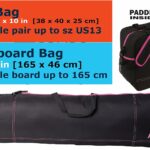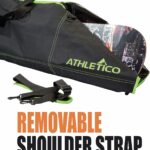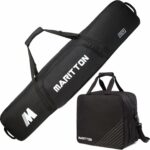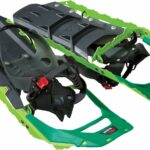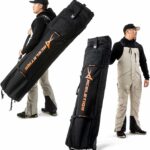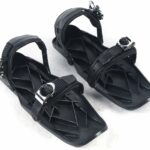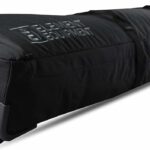Are you curious about the world of snowboarding and wondering, “What’s a freestyle snowboard?” Well, you’re about to get all your burning questions answered! This article will unveil the fascinating details surrounding a freestyle snowboard, a unique piece of equipment designed specifically for those who love pushing boundaries and performing breathtaking tricks on snow. It’ll guide you through its distinctive features, its design, how it’s used, and why it certainly isn’t just your ordinary snowboard. Buckle up and get ready to explore the adrenaline-pumping, thrilling realm of freestyle snowboarding!
Understanding Freestyle Snowboarding
Before we get into the heart of the matter, let’s first clarify some basics.
Definition of Freestyle Snowboarding
When we talk about freestyle snowboarding, we’re referring to any riding that incorporates tricks, jumps, and ride switch (riding backward). This could be in the terrain park, a halfpipe, in the backcountry or simply on the slopes. It’s all about creativity, style, and pushing personal boundaries.
Origin and Evolution of Freestyle Snowboarding
The origins of freestyle snowboarding can be traced back to the late 1960s, in the birthplace of snowboarding itself, Michigan, USA. It has evolved significantly since its inception, with equipment shifting from simple wooden designs to sophisticated equipment tailored for specific styles. And the tricks… oh boy, the tricks have gone from simple 180s and rail slides to mind-boggling triple corks and 1440s!
Features of a Freestyle Snowboard
Let’s now focus on the board itself.
Size and Shape of Freestyle Snowboards
Freestyle snowboards typically range from 145cm to 155cm long for adults. Shorter boards are quicker to turn and easier to spin, which is essential for park riding. As for the shape, freestyle snowboards are often symmetrical, in other words, the nose and the tail are identical, making it easier to ride in both directions.
Flexibility and Weight
Freestyle snowboards usually have a soft to medium flex. This flexibility aids with balance in trick execution and provides a forgiving nature when landing jumps. These boards are also generally lightweight to allow higher jumps and better control when performing tricks in the air.
Types of Tips
The tip design of freestyle snowboards is often twin-tip – meaning both the nose and tail of the board curve upwards. This design is advantageous for riding switch and for taking off and landing jumps in either direction.
Materials and Construction of Freestyle Snowboards
The type of materials and the way a board is constructed greatly impact its performance.
Materials Used in Construction
The core of most freestyle snowboards is made from wood or foam, or a combination of both. They often incorporate other materials such as fiberglass, carbon, and kevlar. The base is usually made from durable, gliding material that withstands repetitive impacts, like durable P-Tex.
The Manufacturing Process
The process of building a snowboard include creating a core (usually wood), sandwiching it with layers of fiberglass, and then setting it inside a mold which forms the shape and camber of the board. The top sheet and base material are also added in this process, before everything is heated and pressurized to form a strong bond.
Influence of Material on Performance
The materials used influence the overall flexibility, weight, durability, and speed of the board. For freestyle snowboarding, a lightweight, flexible and durable board is usually preferred.
Freestyle Snowboarding Disciplines
There are several sub-disciplines within freestyle snowboarding, each with its unique set of thrills.
Halfpipe Riding
Halfpipe riding involves carving, jumping, and performing tricks on a large, dished out, groomed ‘half-pipe’ built from snow. This is where riders get to defy gravity and perform some breathtaking aerial stunts.
Slopestyle
Slopestyle courses include a range of obstacles including rails, jumps, and other features. The rider’s skills are put to the test with both a variety of tricks and the flow of their run down the slope.
Big Air Competitions
In Big Air, riders have one job- to ride down a hill, off a massive jump and perform the most spectacular trick they can before landing. A thrilling spectacle, to say the least.
Rail Jam Sessions
Rail Jams are all about performing tricks on rails and other park features. This usually takes place in a small, predefined area with a festive atmosphere.
Choosing the Right Freestyle Snowboard
Choosing the right board is largely subjective and depends a lot on personal preferences and riding style.
Factors To Consider When Buying
Some of the main factors to consider are your height and weight, the type of riding you plan to do, your skill level, and personal preferences such as flexibility, and shape of the board.
Best Brands For Freestyle Snowboards
Some of the best brands in the market for freestyle snowboards include Burton, Capita, Lib Tech, and Jones. Each of these brands has a variety of models, so do your research about which one suits you the most.
Cost of a Freestyle Snowboard
The cost of a freestyle snowboard could range from about $200 to over $700. It largely depends on the brand, the materials used, the tech included in the board, and the specific model you’re interested in.
How to Maintain a Freestyle Snowboard
In order to keep your board in a top-notch condition for a long time, regular maintenance is key.
Regular Cleaning and De-burring
Make sure to regularly clean your snowboard after sessions. De-burring the edges is also crucial to keep it sharp and efficient.
Periodic Waxing
Waxing your snowboard regularly helps to keep the base well-conditioned and able to glide smoothly over the snow.
Checking for Damages
Ensure you’re regularly checking for any damages or cracks that might occur. Addressing these issues promptly can prevent further, potentially more serious damage.
Training for Freestyle Snowboarding
Freestyle snowboarding is an intense sport and it needs some serious training.
Basic Training Techniques
From training on your balance to practices on flat ground, half-pipes, and terrain parks, strengthening your core, your leg muscles, or even mastering the art of falling safely can go a long way.
Proper Gearing and Safety
Remember to always use proper protective equipment including a helmet, wrist guards, and padded shorts. Properly fitted snowboard boots and selecting the right bindings are equally important.
Improving existing Skills and Learning New Ones
There’s always room at the top! Constantly work on improving your existing tricks and always keep an open mind to learn new tricks or techniques.
Freestyle Snowboarding Risks and Safety
As with any extreme sport, there are risks involved in freestyle snowboarding.
Common Injuries in Freestyle Snowboarding
The most common injuries in freestyle snowboarding tend to be fractures or sprains of wrists, shoulders, knees, and ankles. Head injuries can also occur.
Preventing Injuries
Range from proper protective gear, correct technique, regular training, and not pushing beyond your skill borders – these are all crucial steps to lessen the risk of injuries.
Safety Equipment Required
Apart from your board, boots, and bindings, you’ll need a helmet, wrist guards, knee pads, padded shorts, and potentially more depending on how hard-core your riding gets.
Freestyle Snowboarding Competitions
Freestyle snowboarding is at its heart a sport and yes, that means competitions!
Major Competitions Worldwide
There are many major comps worldwide, some of the biggest are the X Games and the Winter Olympics. There are also numerous national and regional competitions.
Rules and Evaluation in Competitions
Each competition will have different rules but generally, judges are looking at the level of difficulty, execution, flow and style of the competitors’ runs.
Training For Competitions
Training for competitions should be well-structured and progressive, and often needs a dedicated coach. It should, of course, focus on technical skills, but also physical conditioning and mental preparation.
The Future of Freestyle Snowboarding
What does the future hold for freestyle snowboarding? Let’s see!
Trends and Advancements
Trends are continuously evolving, with tricks becoming more complex, and the designs of boards and clothing becoming more specialized. And that’s not even starting on the evolution of indoor snowboarding venues!
Changes In Rules And Competitions
Rules and regulations are always changing. For example, the introduction of the ‘knuckle huck’ competition at the X Games celebrates creativity and style rather than the biggest spins.
Evolution of Snowboard Design and Technology
Like any other sport, the technology and design of the equipment used in freestyle snowboarding keep improving with time. Manufacturers constantly innovate their products to offer something that could potentially make their customers better snowboarders, whether that’s through lighter materials, more responsive boards, or even heated boots!
And that’s it for our freestyle snowboarding deep-dive. Now you know it’s not just about sliding down a hill on a piece of wood. It’s a sport full of creativity, innovation, and constant progression. Happy shredding!
- What Snowboard Bindings Should I Get? - January 23, 2024
- What Size Screws For Snowboard Bindings? - January 23, 2024
- How To Snowmobile On Water? - January 23, 2024

